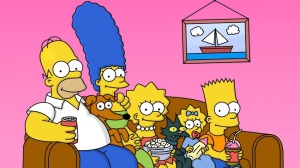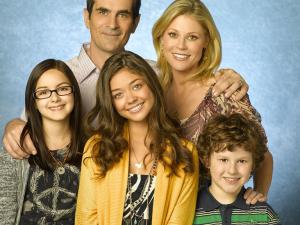Trial and Error
For the group survey and interview assignment my group and I have decided to look at how families are represented in television sitcoms and if it has changed over time, with specific reference to The Simpsons (pre 2000) and Modern Family.
After brainstorming ideas for appropriate questions that can be used in our survey, we put together ten questions that would hopefully provide us with enough information to be able to conduct an interview with a focus group.
As a method of trial and error I interviewed a friend who is around the same age as what participants of the focus group will be, using questions based off the survey so I could get feedback on it thus far.
The survey consisted of just two basic demographic questions, as we felt that with the limited amount of space, focus shouldn’t be placed on demographics, as they are not very relevant to our question. The survey’s structure included three open-ended questions and seven forced-choice questions, however two of these forced-choice questions had a part B to give a free response also.
Two of the questions I used in the interview focussed directly on the main characters from each show (Simpsons; Homer, Marge, Bart, Lisa and Maggie, Modern Family; Phil, Claire, Hayley, Alex, Luke) one being forced-choice and one being open-ended. This gave me an insight into the interviewee’s perspective on each character and what her perception of each of the character’s role in family was.
In my opinion, both of these questions were effective in providing valuable information on the research question and should be used in the final survey. As an example, one question asked the interviewee to use one word to describe the role of each member in the family. The interviewee chose the word ‘sensible’ to describe Marge and ‘spontaneous’ to describe Claire. This suggests that the mother role in families has evolved over time in her opinion.
There was one question that I found was not as effective in providing valuable information and I feel needs to either be reworded or replaced with a more relevant question for the final survey. It asked the interviewee if she thought the scriptwriters of The Simpsons and Modern Family aim to represent the average family. The answer I received was not convincing and the interviewee was unsure. In my opinion, it encouraged her to put herself in a scriptwriter’s position and think of what the appropriate answer would be, rather than what her honest opinion was.
I finished the interview with asking the interviewee straight up the research question to giver her the opportunity to talk freely on the topic. I chose to ask this question at the end of the interview rather than the start in hopes that the answer would be more educated as she had spent the previous fifteen minutes thinking about the topic and addressing it bit by bit. I think this worked really well and would like to work that technique into the final survey.
image: Fox Broadcasting Company
image: Crump, K 2013, Modern Family, image, Den of Geek, Viewed 19 April 2015, <http://www.denofgeek.us/tv/modern-family/61820/modern-family-season-4-episode-14-heart-broken-review>

